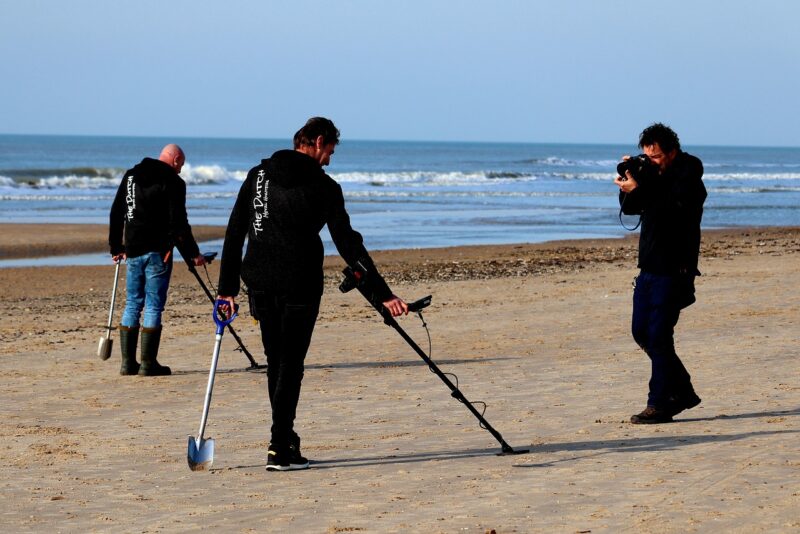The Most Surprising Discoveries Made While Searching for Lost Treasures and Hidden Relics
November 17, 2024

The allure of treasure hunting has captivated humanity for centuries. From the lost cities of gold to centuries-old shipwrecks, the pursuit of hidden relics and lost treasures is both enchanting and rewarding. Many have set out on perilous journeys, braving the elements and refusing to be swayed by the myths that shroud these treasures. However, some of the most compelling discoveries were entirely unexpected. This article delves into the most surprising finds made during treasure hunts and how these discoveries have changed our understanding of history.
1. The Shipwreck of the Spanish Galleon Nuestra Señora de Atocha
In 1622, the Spanish galleon Nuestra Señora de Atocha sank off the coast of Florida during a hurricane. It carried an immense cargo of gold, silver, and precious gems, worth an estimated $400 million today. In the 1980s, treasure hunter Mel Fisher and his team spent over 16 years searching for the ship, facing legal disputes and financial hardship.
After tracking down some promising clues, Fisher finally made a remarkable find on July 20, 1985. Not only did they recover a massive amount of gold and silver coins, but they also uncovered unique artifacts such as emeralds and gold chains, thus revealing the opulence of the Spanish Empire. The unexpected highlight was finding a ship’s bell inscribed with the name of the galleon, proving that they had indeed located the lost treasure. This discovery reshaped our understanding of maritime history and the extent of Spanish exploration.
2. The Rosetta Stone: A National Treasure Rediscovered
Initially discovered in 1799 by a French soldier during Egypt’s campaign, the Rosetta Stone is one of the most significant archaeological finds in history. It was not so much searching for lost treasure but rather a fortuitous excavation that revealed a hidden layer of human language. The stone is inscribed with the same text in three scripts: Greek, Demotic, and hieroglyphic, which helped scholars decode ancient Egyptian writing for the first time.
What was most surprising about its discovery wasn’t just the stone’s significance but also where it surfaced — the small village of Rosetta (or Rashid) in Egypt, rather than a grand hidden temple as one might expect for such a vital historical object. It serves as a reminder that sometimes the most profound treasures arise from unexpected circumstances.
3. The Terracotta Army: An Empire’s Guard Awakened
In 1974, a group of farmers digging a well in Shaanxi, China, stumbled upon a vast underground army made of terracotta. The Terracotta Army, created to guard the tomb of the first Emperor of China, Qin Shi Huang, comprises over 8,000 life-sized figures, each uniquely detailed. What began as a mundane agricultural task transformed into one of the most significant archaeological finds of the 20th century.
The most surprising aspect of this discovery was not just its scale but the fact that it lay undisturbed for over two millennia. The army includes various ranks of soldiers, horses, and chariots, shedding light on ancient Chinese culture and the rich history of the Qin dynasty. Additionally, the sheer artistry demonstrated in the construction of each soldier revealed the impressive capabilities of ancient Chinese artisans.
4. The Treasure of the Flor de la Mar
The Flor de la Mar was a Portuguese ship that sank in 1511 near present-day Malaysia, carrying a treasure trove of gold, silver, and precious stones, worth an estimated $2 billion today. Despite numerous attempts to locate the ship, the treasure has eluded treasure hunters for centuries.
In 2017, while searching in the South China Sea, researchers discovered not only remnants of the ship but also a previously unknown underwater city. This hidden relic completely rewrote the maritime archaeology map by indicating that significant human settlements existed in the region that had gone unnoticed. The discovery of the underwater city was as astonishing as the treasure itself, revealing insights into trade routes, cultural exchanges, and the regional interplay of power in the Age of Exploration.
5. The Lost City of Gold: El Dorado
For centuries, explorers have searched for the legendary El Dorado, a city believed to be rich in gold and precious stones. The quest led many to South America, seeking out mythical landscapes that promised immeasurable wealth. However, a surprising twist occurred when modern technologies, such as Lidar (Light Detection and Ranging), revealed ancient civilizations in the uncharted Amazon rainforest.
Researchers discovered a complex system of earthworks, irrigation, and road networks, indicating that substantial and sophisticated societies thrived long before European contact. Rather than merely seeking treasure, the findings highlighted the importance of conservation and understanding indigenous cultures. The quest for El Dorado taught us that hidden treasures could also mean discovering the rich history of humanity itself.
Conclusion: The Enigmatic Nature of Treasure Hunting
The search for lost treasures and hidden relics often surprises us, revealing more than just gold or artifacts; they unearth rich narratives of culture, history, and human persistence. From the opulence of the Spanish Empire to the revelations of ancient civilizations in the Amazon rainforest, these remarkable discoveries continue to provide profound insights into our shared past. Therefore, the next time you hear tales of treasure hunts, remember that the most exciting finds might not always be what you initially believed but rather treasures of knowledge that illuminate our understanding of history.
Embrace the spirit of adventure, as you never know — the next surprising discovery could redefine what we know about our world!





